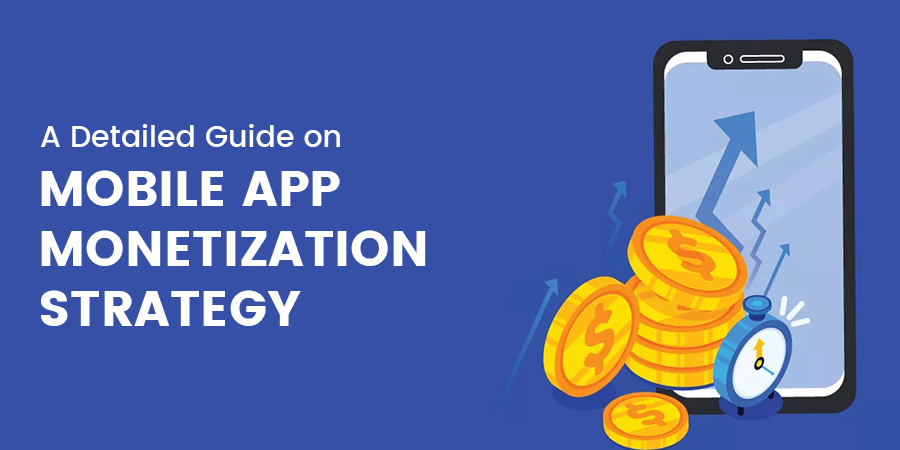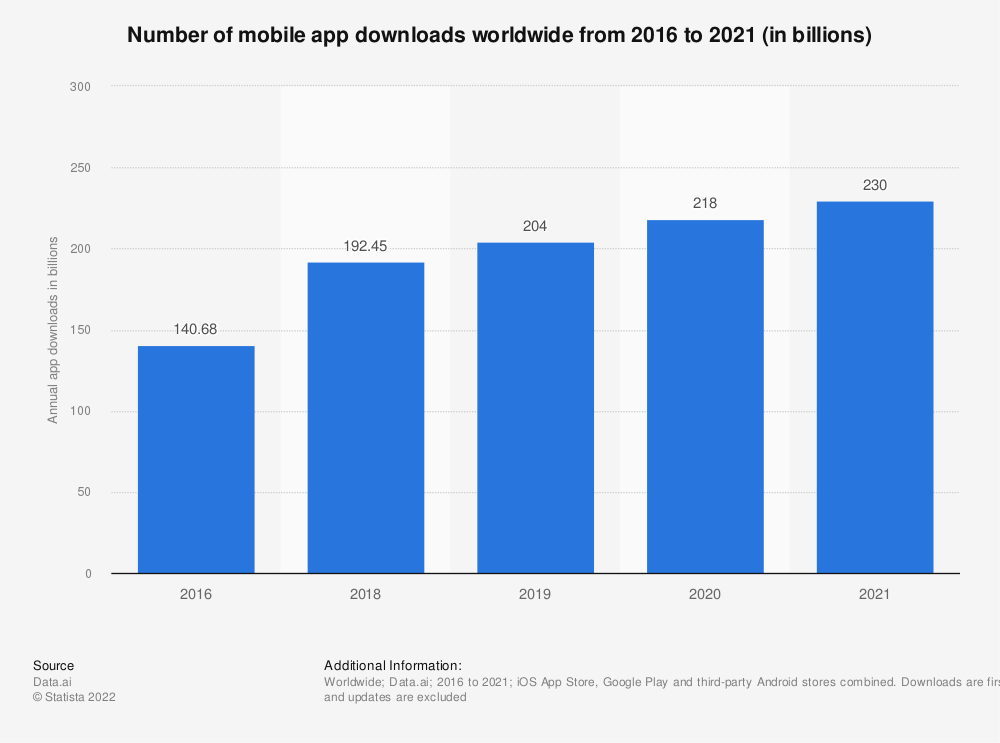
How to Build An AI Stylist App Like Alta
AI is expanding its reach in almost every sector, and the fashion worl...

Mobile developers build applications with multiple goals in mind. It is not only about coming up with a background idea for a mobile app and turning that vision into a reality. The fact is it isn’t always as easy as it seems. Building a mobile app is just the beginning, but the biggest struggle that mobile app creators often come up with is determining how to monetize their efforts.
Figuring out how you can make money from your mobile application is crucial for planning, development, and future upkeep of the app. It doesn’t matter if your app has been live. It is never too late to monetize your mobile application with various goals, such as helping people or creating a positive user experience, but generating a business revenue is often a primary goal.
However, it should be noted that app monetization isn’t a simple concept as there are several methods you can use to generate attractive revenue from an application. And building a robust mobile app monetization strategy is the best way to do this. You need to make a strategy that will help you monetize your application effectively.
We created this app monetization guide to assist you in successfully monetizing your app and help you increase the ROI of your mobile app. This post contains everything you need to know about mobile app monetization.
Mobile app monetization is the deployment of methods and techniques to generate revenue from a mobile. Mobile app monetization statistics & facts show that, the number of mobile app downloads has increased and has reached 230 billion annual downloads by 2021. And in the years to come, greater growth is anticipated.

The mobile app monetization models fall into one of two categories: direct monetization and indirect monetization. Shipping about both types, direct monetization is more prevalent as consumers can access the paid content or services directly from the mobile application. Let’s take a glance at the two monetization techniques.
As the name implies, the revenue in this category is generated directly by the app.
Suppose you sell a premium app for $10 on the App Store or Play Store. If someone buys your app, the money will come directly from the app. Even if an app user purchases something from within your app, the revenue will come directly from the app.
In this category of app monetization, your app revenue does not come directly from your app. You profit regardless of whether or not the app is used.
Assume you place Google Ads in your app; even if your app generates no revenue, Google will pay you.
If you don’t have a solid monetization plan in place, your app won’t make any money, and it will be tough to recover the cost, time, and resources you spent developing it. More importantly, a well-researched app monetization plan ensures that you provide a positive user experience so that you can retain and grow your user base while earning money. The app market is worth billions of dollars and is continually expanding. Experts predict that app income would more than double between 2018 and 2022.
The most effective method of monetizing an application is to allow users to make purchases within the application itself. If your app is free, like 95% of all other products in the Google Play store, in-app advertising revenue model purchases will give you a discrete option to improve the user experience and monetize your app. However, it would help if you thought about your consumers before enabling in-app purchases for them to utilise your app. It would be advantageous to give some thought to the various ways the user experience might be enhanced.
Because of the additional benefits that the user obtains, the best in-app purchases will also lower the amount of churn that occurs. With this approach, it is worth your time to discover the proper mix between a fantastic free program and perks that can be purchased for a reasonable price within the application itself.
You need to be familiar with the distinction between non-consumable and consumable products before making an informed decision about the in-app purchases you want to make. The main difference between these two types of in-app purchases is that consumables are only available for a short period and in limited quantities. In contrast, non-consumables simply need to be purchased once.
The term “freemium” is a fusion of two words “, free” and “premium.” This method of generating revenue starts by making the app service accessible to users. After that, you can give multiple program variations, including free and paid versions. Users can access content with additional features and capabilities by using the premium model of the mobile app, which is offered at no cost and contains the app’s core functionality. For instance, some mobile applications have ad-free premium editions that may be purchased for an additional fee.
People may have difficulty transitioning from being free users to paying consumers. Therefore, it would be fantastic if you worked on providing free product versions. In addition, you can adjust the price of the premium version to justifiable levels. For example, if the differences between the standard and premium versions are insignificant, then few people will pay to upgrade to the premium version. A free premium version is provided monthly as part of this Freemium business model. Extending the free trial periods for these different versions is another way to improve this model’s implementation.
Digital advertising is an excellent opportunity to monetize mobile applications since it significantly improves the communication channel between marketers and customers. This is because people spend so much time on their phones. At least ninety minutes every day, or twenty-three days per year.
The challenge then becomes, how can you leverage this data to monetize your application? Well, advertisers generate various forms of advertisements, such as:
This technique of app monetization allows you to regularly notify your users about upcoming events, competitions, and promotions as well as the most up-to-date information on these issues, making it one of the greatest methods to keep in touch with your users.
You can increase user engagement and strengthen your brand by attracting customers to your app. You may then improve user engagement as a result of this. A paid newsletter can be the ideal choice for you if you want to provide your audience with content that is fresh and up to date because it significantly boosts earnings.
It is essential to develop a robust business model for mobile apps because this model serves as the application’s primary support structure. You can design your own code, and if it proves to be profitable, other brands may approach your code and give trustworthy tactics that are profitable for your company. It is an excellent way to make money by licensing your code to many developers without disrupting the user experience.
If we talk about white labeling, we mean that you are producing a good or service that other entrepreneurs can buy from you, rebrand, and sell under their own name. Because white label apps allow you to generate income from various sources, there is a consistent demand for them. If you are having trouble selling the brand under your name, white labeling is the best choice because it is more competitive.
Subscriptions are a wonderful approach for an app to generate recurring money. Users just need to sign up for a subscription once, and they will be charged on a recurring basis until they cancel the subscription manually.
Subscription apps could be used in a variety of sectors and use cases. When deciding on a subscription approach, keep in mind that you need to convert your users into subscribers while also keeping your existing subscribers from churning. To keep existing subscribers interested, you must regularly offer fresh content and features to new, free users and highlight the benefits of app upgrades to new, free users.
This strategy, also known as influence marketing, has the potential to be the most effective method for monetizing your app. Businesses may show interest in using mobile apps to interact with their target consumers if they have a huge user base or have created an audience in a particular niche. This interest can be prompted by the fact that you have a large user base or an audience.
Putting your users in front of sponsors can benefit both parties, including you. Not only is it possible to make money off your mobile app, but you can also connect your consumers to a brand they might find helpful. For instance, if you own an app for grocery shopping, you may collaborate with partners who hold the same beliefs as you do to provide helpful recommendations to app users while raising awareness of your brand.
The process of monetizing an app can be challenging for both business owners and the creators of mobile apps. However, making money with a mobile app doesn’t have to be difficult if you use the right strategies. The only thing you need to do is have an understanding of the various methods by which a mobile application might earn cash. After that, all that is left to do is figure out which tactic is most successful for you.
Everything you need to know about app monetization models is covered in this tutorial. The mobile app monetization techniques listed above can help you make money from your app. You can seek the advice of Nascenture professionals if you experience any troubles. Our professionals can assist in achieving the desired result because they have in-depth knowledge of the app monetization process. Let’s talk more in-depth about this when we get in touch.